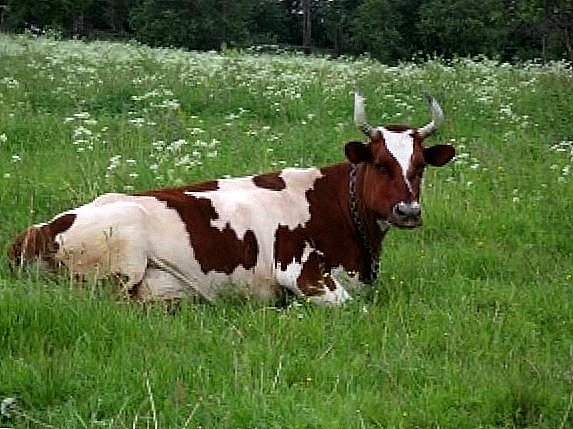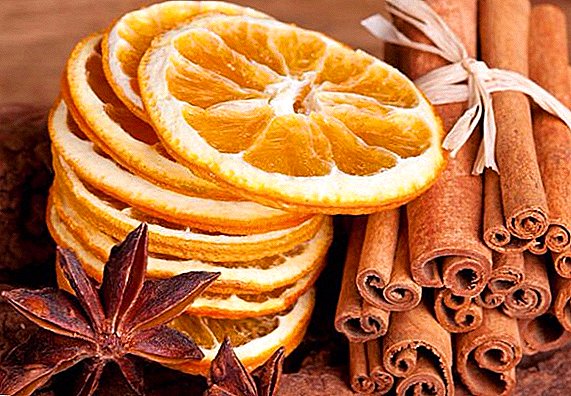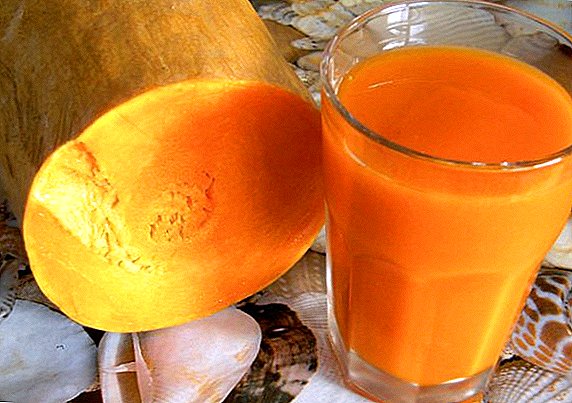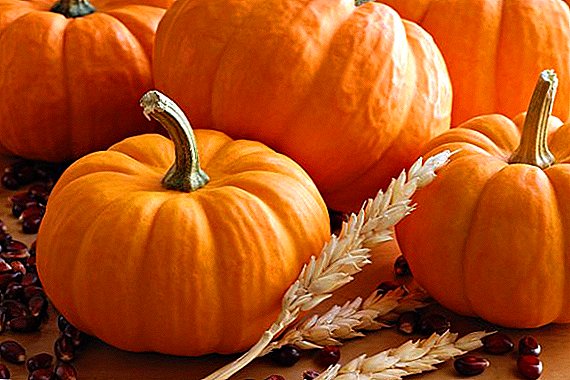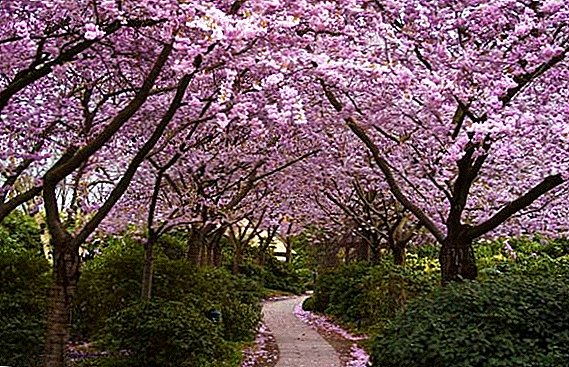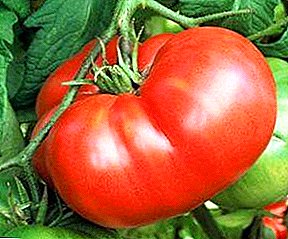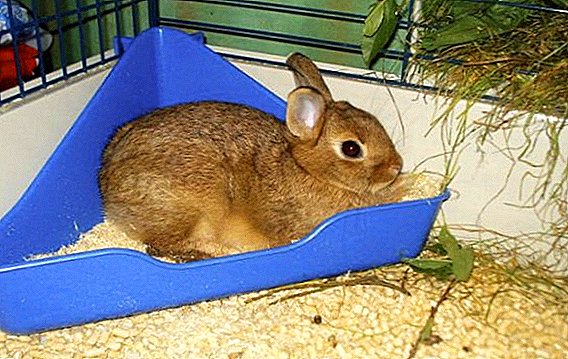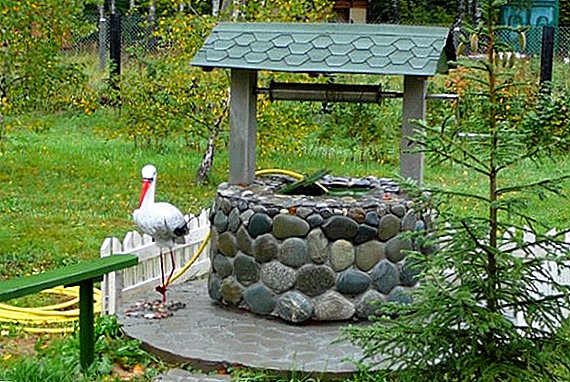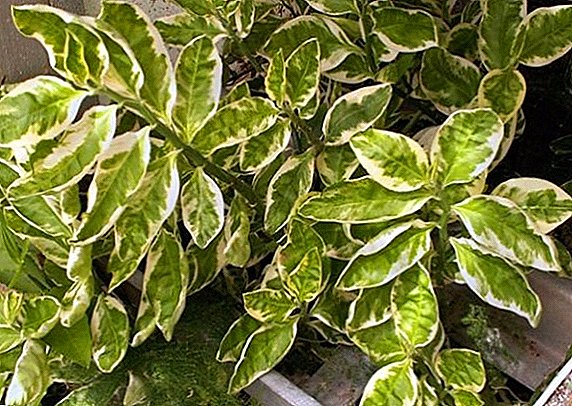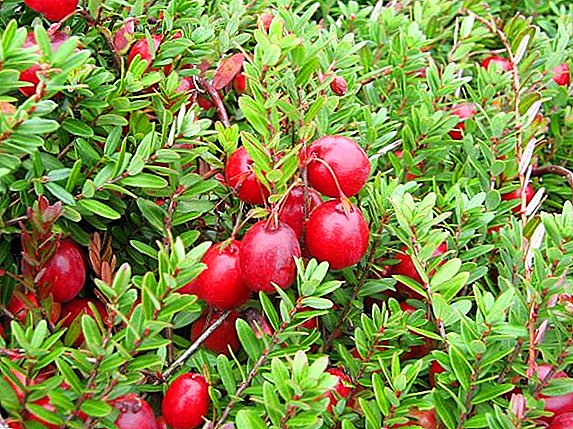 Today, almost every gardener wants to grow up cranberries in his summer cottage, because it is much easier to do this than to go for tasty berries to the forest, making his way through thorny bushes. Therefore, this article presents a detailed material about the beloved cranberries of the garden, about the features of its planting and further care along with the photo.
Today, almost every gardener wants to grow up cranberries in his summer cottage, because it is much easier to do this than to go for tasty berries to the forest, making his way through thorny bushes. Therefore, this article presents a detailed material about the beloved cranberries of the garden, about the features of its planting and further care along with the photo.
Description
Evergreen graceful shrub cranberry with red sweet-sour fruit belongs to the cowberry family and is widely known as the northern berry growing in the swamps of the Leningrad region. This plant is not for nothing that they consider a storehouse of the most valuable food and medicinal substances, its fruits, similar to cherry, contain vitamins A, C, B1, B2, PP, K and such useful for the body as thiamine, riboflavin and niacin.
Blueberries and blueberries are representatives of the cowberry family, the fruits of which are of great nutritional value.
Cranberry garden is considered large-fruited because of its large beautiful berries, the size of which varies from 15 to 25 mm, which is three times larger in diameter than the fruits of ordinary marsh. The shrubs of the plant produce shoots of the horizontal and creeping type, the length of which depends mainly on their variety and can be from 50 to 115 cm. Fortunately, garden cranberries are perfectly adapted for planting and growing in simple garden plots and gardens, as well as completely unpretentious and non capricious in the care.
Did you know? The American amateur gardener Henry Hall first cultivated this plant in the first half of the 19th century, and the first varieties of large-fruited cranberries were obtained by selection from the marsh, wild.

Landing features
To understand how to correctly and accurately grow the cranberries in your garden, you must take into account all the features of this process.
Dates (spring, autumn)
Cranberry bushes are planted, usually in early spring, when the land in the plots is already sufficiently thawed to an approximate depth of 5 to 10 cm. Autumn planting is not involved, they only prepare the ground (in September) for spring planting delicious berries. 
Landing place
Place for planting should be chosen open and well lit (can be slightly shaded by crowns of other trees), and the groundwater level should lie about 25 cm below the soil level. The ideal place for disembarkation would be the coast of a country brook or a lake.
Soil requirements
Also an important detail in the process of growing cranberries is its demands on the soil: few know that it should be very acidic (pH 3.5-6.5), which will give the cranberry shrubs all the chances for the best germination in any garden plot.
Important! Water for further watering after planting also needs to be used with acidic reaction (pH 4), otherwise the berry will develop chlorosis on the leaves, which will lead to further inhibition of growth and final death.The site itself should be a water- and airtight plain, the soil of which can be clayey, heavy, based on high-moor peat or forest substrate.

How to plant cranberries in the garden
The process of planting cranberries and further growing it in my garden is very simple. To begin with, it is necessary to form a special bed for it - dig a trench about 30 cm deep and remove the ground, and since the root system of the cranberry is superficial, then such a small depth will be sufficient for its landing. The plantation of the cranberry plant is as follows: the plants are placed in holes with dimensions of 10 × 15 or 10 × 10 cm, if possible, planting is thicker so that the shoots close as quickly as possible and completely cover the surface of the ground. Then the plant should be watered with water, lightly sprinkled with soil and mulch - this is quite enough for it to stick to your garden bed.
Important! Prepared cranberry seedlings should be slightly buried - it will be better to stimulate the formation of new roots in the underground part of the shoot.
Proper care of a flowering plant
Immediately after planting the cranberry seedlings, you must carefully follow some important rules of care.
- After planting, the soil should immediately cover the film and hold it until the formation of lashes.
- After germination of 15–20 cm, the lashes are pinned with a stick so that they do not leave the site.
- Watering cranberries should be regular, the soil should always be hydrated, and once a week it generally needs to be poured strongly enough. On hot summer days, hydration should be carried out daily.
- During the growing season, one should not forget about feeding the plant with solutions of complex mineral fertilizers, this should be done once every two weeks, while not forgetting about water pouring (with the content of citric acid and vinegar solution).
Did you know? The English name for cranberries is cranberry, which means "crane berry". Such an interesting name was due to the similarity of the long and thin flowers of the berry with the head or beak of a crane. In Russia, it is also called "snowdrop", "zhuravikha" and "spring wood".

In the spring
In the spring, when the cranberry berry becomes green, it is necessary to carry out thinning pruning of the bush and feed it with complete mineral fertilizer. It is also important to remember the timely loosening of the soil, which, moreover, must always be in a slightly damp state. Since the cranberry is well pollinated by bees, the best solution would be planting honey plants near its bed - oregano, savory, etc.
Familiarize yourself with a variety of fruit bushes: raspberry, gumi, olga, irga, goji, grapes, currants, physalis, sea buckthorn and wild rose.
Summer
In the hot summer period, especially in the second half, it is very important to ensure that the soil in the garden does not dry out, and by regular watering you should not forget about the love of the berries for an acidic habitat, therefore water should be used with the addition of citric or acetic acid. Necessary conditions for good development of the shrub are also timely cleaning of the beds from unwanted weeds and good loosening of the soil.
Important! It is advisable to mulch the plots with a three-year-old berry grown every 3-4 years with a layer of peat crumb or coarse sand up to two centimeters thick.

In the autumn
In the autumn, in September-October, it is already possible to safely harvest a generous cranberry crop. Fruits need to be selected slightly immature, they must ripen during storage.
Other breeding methods
Cranberry shrub propagation occurs in two ways - vegetative and generative. Since in this article we looked at the vegetative reproduction of seedlings, then we will discuss the less popular among the summer residents of the method of planting cranberries - seed.
Seed propagation It is mainly used only for breeding purposes, the berries are extracted from well-ripened fruits and immediately sown or sent for storage in small paper packages. 
Usually, after drying, the seeds germinate worse, but fresh produce excellent shoots after two weeks. Planting in such circumstances is carried out in the summer time in this way: the seeds are scattered over the soil surface (substrate) and sprinkled with a light layer of sand (2-3 mm), then watered, covered with glass and placed in a warm place.
When sprouted shoots grow on 4-5 leaves, they dive into pots or beds in a greenhouse at a distance of at least 10 cm from each other. The seedlings are fertilized from April to July at intervals of two weeks, in August the protective cover is removed from the greenhouse, and in October the garden bed is mulched with a 5-centimeter layer of peat and again covered for wintering, only with two layers of spunbond.
Before planting in a permanent habitat, seedlings are germinated for another couple of years, and the crop from seed-grown bushes can only be obtained after two or three years.
Read also about the medicinal properties and contraindications of cranberries.

Diseases and pests
Like all garden and garden plants, cranberry bushes are also exposed to various diseases and pest invasion. Even the most healthy-fenced bushes, unfortunately, can catch some characteristic disease of this type, for example:
- red spot is a fungal disease that can lead to the death and deformation of shoots. To combat this disease, use 2 g of "Fundazole" and "Topsina L", diluted in 1 liter of water, this solution is used to thoroughly treat the affected plant;
- fomopsis is a disease that causes drought of the cranberry ends without withering. Such an attack can strike in dry and especially hot weather. To get rid of the symptoms of this ailment, the bush is treated with any systemic fungicide;
- cytosporosis, or black rot, which affects the fruits of cranberries. "Chloroxide copper" will help get rid of the disease;
- Snow mold is one of the most harmful and destructive diseases, and if it is not treated, foci can completely destroy the entire shrub. To prevent the site prophylactically sprayed with a solution of "Fundazol";
- Monilial burn - a fungal infection of the tips of the shoots, they wither from it, turn brown and dry. To fight well suited "Topsin M" or "Ronilan";
- Pestalation - harms berries, leaves and stalks. It is characterized by brown spots on green areas, and later they merge and turn into gray ugly spots. From this disease will help copper oxychloride;
- Terry or sprouting is a dangerous virus caused by mycoplasma microorganisms. From his shoots are literally similar to the "witch brooms." The bush completely ceases to bear fruit, and if the fruits began to form even before the onset of the disease - they turn out small and ugly. Unfortunately, no medicine has yet been invented for the treatment of this viral disease, so the affected plant just needs to be removed from the garden bed;
- Botrytis - covers stems in wet weather with a fungal fluffy patina. It has another name - gray rot. To combat the disease it is necessary to use Bordeaux treatment liquid.

If you follow the obligatory and fairly simple rules, a beautiful cranberry garden plant will surely simplify the process of its cultivation to its owner and make caring for it a pleasant experience, and then thank him with a rich and vitaminous crop.


